It is important to harvest fruits at the proper stage of maturity in order to maintain their nutrients as well as their quality and freshness. Factors that favor conserving quality and nutrients are: rapid harvesting, preferably done early in the day; prompt cooling; gentle handling; and proper storage if the fruit is not used immediately. Tree fruits (except pears) develop maximum flavor and quality when allowed to mature on the tree. All of the fruits on a tree do not mature simultaneously. To obtain maximum quality, therefore, several pickings are frequently necessary.
Ideal storage conditions for fresh fruits are 31˚ to 33˚ F, 90% humidity, and subdued light or darkness. Most home gardeners cannot provide these ideal storage conditions. However, the closer one can approach these conditions, the longer one can store fresh fruits.
- Probably the best storage conditions available to the home gardener are to keep the fruits in a plastic bag in a refrigerator.
- Close the bag loosely or punch one or two small holes in it for slow air exchange.
- The plastic bag will prevent dehydration of the fruits.
- Cherries, peaches, nectarines, apricots, plums, and summer apples have short storage lives even under ideal conditions.
- Fall apples and pears have somewhat longer storage lives.
- Of the fruits that store well, only those that mature in late fall, such as apples and pears, should be considered for home storage.
- The other kinds of fruits should be stored for short periods of time only, or preserved for winter use by canning, freezing, or drying.
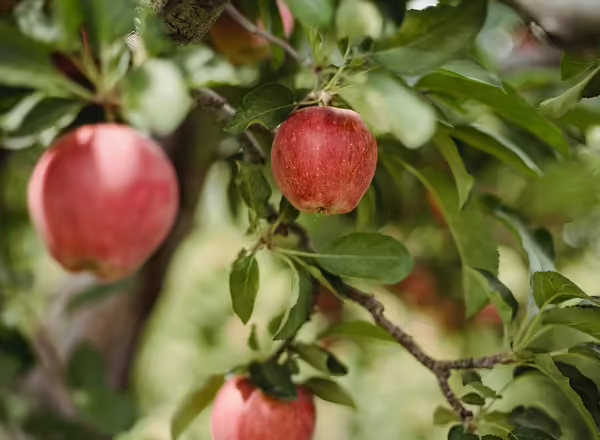
The time for harvest of apples is based on the condition and maturity of the fruit. An early indication of the approaching harvest time is when normal, unblemished fruit begins to drop. Check to see if the flesh color at the bottom of the fruit has turned from green to yellow green. A taste test will also indicate that the starches are turning to sugar.
When all signs of maturity are present, the apple should pick easily with the stem still attached to the fruit. Picking is done by rolling or twisting the apple away from the fruit spur. Harvested apples should be kept cold (33˚ to 35˚ F) for retention of flavor and quality. When stored in this temperature range, apples change very little. At 40˚ F, they ripen slowly, and at 60˚ or higher they mature rapidly. The best way to store apples is in perforated plastic bags in the refrigerator. Winter apples such as ‘Winesap’ and ‘Rome’ have the longest storage lives.
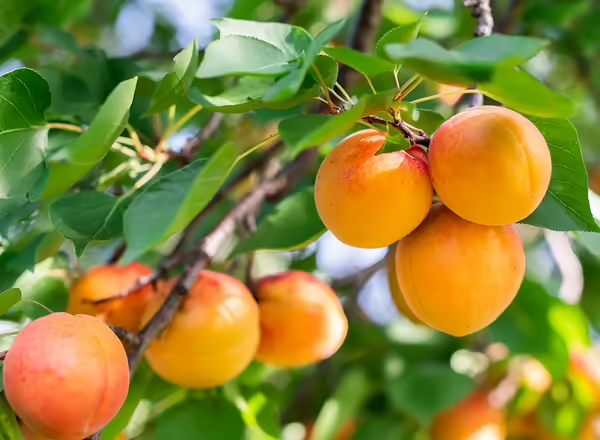
Allow the fruit to reach the firm-ripe stage on the tree. It should be slightly soft, golden yellow, and easily separated from the stem. Fruit that is to be dried should first ripen fully on the tree. Apricots keep for about three weeks if stored in cool temperatures (40˚ to 50˚ F).
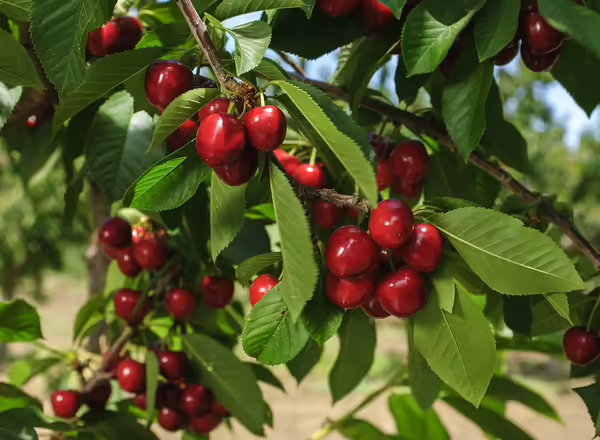
Cherries, like peaches, continue to increase in size until they are ripe. They should be picked when they are of maximum size and full-flavored. Cherries picked before they are fully mature will not ripen off the tree, although they may develop additional color.
Sweet cherries become firm when ripe, and sour cherries part easily from the stem.
Cherries that are to be shipped will keep longer if the stems are left attached. For immediate use, they can be picked with or without the stems.
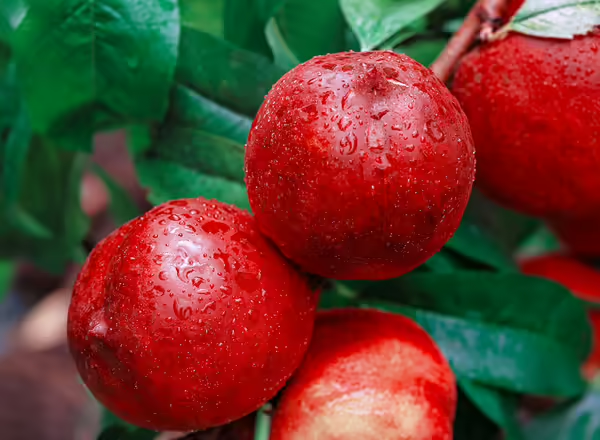
Ripe nectarines have a creamy yellow background color and yield slightly to pressure, particularly along the seam. They are usually ready to pick when a slight twist frees the fruit from the stem. They can be stored for three to four weeks at 30˚F and high humidity.
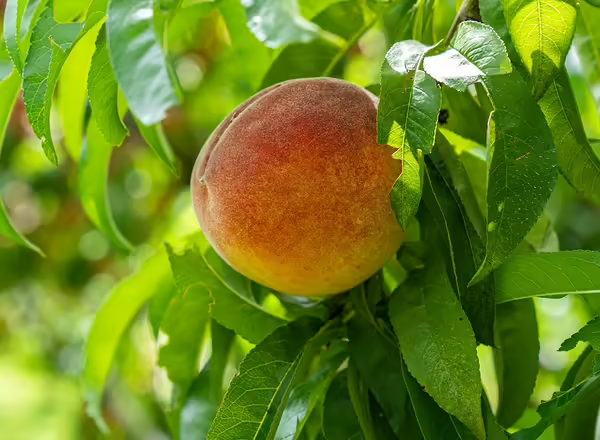
Peaches are best picked when the fruit separates easily from the twigs. Pick them when the ground color changes from green to yellow. The skin of yellow- fleshed varieties ripens to an orange tint, while the skin of white fleshed varieties changes from greenish to yellow-white. For best flavor, allow the fruit to ripen fully on the tree. Store at 32˚ F and high humidity.
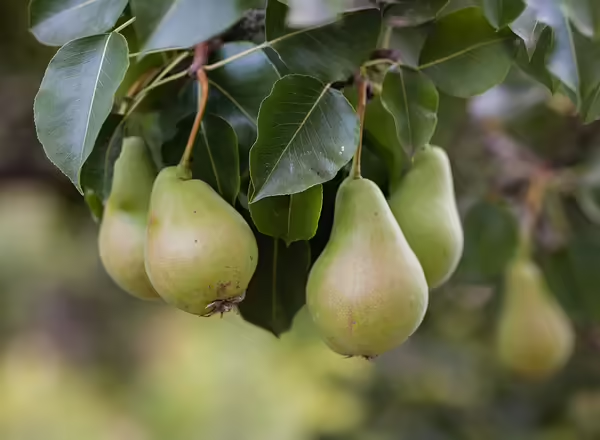
The fruit can be ripened on the tree, but for better quality, they are best picked early and allowed to ripen indoors. A few guidelines to use in determining whether pears are ready to be picked include: healthy fruits begin to drop; there is a change in fruit color from green to yellow; and the stem separates easily from the branch. To pick pears, gasp the fruit firmly and twist or roll it to make the stem separate from the tree. When a few pears on a tree start to mature, harvest all of the fruits and place them in a cool, dark place such as a cellar, in the crawl space under a house, or in an unheated corner of a basement, preferably walled off from the heated area. They should be ripened at a temperature of 60° to 70° F. Look over the pears each week and select out the ripe ones. This will result in optimum quality and smoothness of flesh. If you want to keep pears for a longer period of time, store the freshly picked fruit in the refrigerator.

As plums approach maturity, there is a rapid increase in sugar content and the color changes markedly. With blue or purple varieties, the color changes from green to greenish-blue or reddish-purple, then to dark blue or purple. In other varieties, the color proceeds from a yellowish-green to a more definite yellow or straw yellow, and then to their characteristic yellow or red. As the color increases, the flesh becomes slightly soft, especially at the tip end.
Fruit that is going to be cooked or preserved can be picked when slightly underripe. Plums can be stored for two to four weeks at 30° to 32° F, but at 37° to 50° F they will not keep as long.